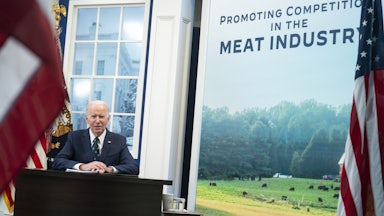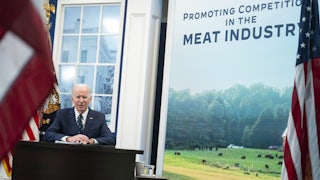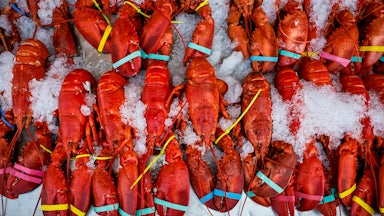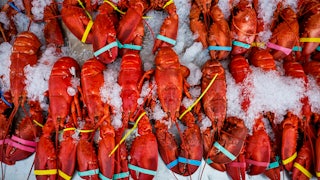The world is teeming with animals that have never met before. They clamber under dripping green canopies in rain forest, they crouch in the rough recesses of mountain caves, they scamper through your backyard. Usually, they stick to what they know, living in the same ecosystems that have supported their kind for millennia. In normal times, they may never encounter the species that live in the mountain or valley or forest next to theirs.
But these are not normal times.
As temperatures spike and rainfall patterns become more erratic, animals are on the move. They’re migrating toward the poles, away from temperate regions, in search of the conditions they need to live in a world that is changing too fast for them to adapt to it. But before they reach their new habitats, they’ll meet each other. And every time a new species meets, there’s a chance to spark a new pandemic. That’s because animals are teeming with pathogens, their own microscopic kingdoms: viruses, bacteria, parasites. Each new interaction is a chance for an animal to get sick in an entirely new way—and to pass it on to other species, including humans.
The science has grown increasingly clear: In a warming, changing world, new viruses will shift between animals and into people with alarming rapidity and frequency.
“What we’re looking at is a total rearrangement of the mammal virome,” said Colin Carlson, an assistant research professor at Georgetown University’s Center for Global Health Science and Security and lead author of a new study published in Nature on Thursday. “And, as species pick up the viruses, we think that there could be some pretty devastating impacts downstream for both human health and conservation.”
Here’s the truly troubling part: These interactions are already happening, the research shows. Even in scenarios where we manage to curb emissions and stop global temperatures from rising, interactions like these are locked in. “We need to think about pandemic preparedness as an escalating problem, no matter what we do upstream at this point,” Carlson, who is a friend of mine, told me. “We cannot put the genie back in the bottle. It is out. It is out today.”
Covid-19 wasn’t the outlier, a once-in-a-century tragedy. It’s a glimpse of the future, especially if we don’t take steps now to understand the intricate and inextricable links between the planet’s health and our own. It’s bad now, but it could get way worse.
What scares Carlson the most is how little we know about the global viral picture—and how unpredictable environmental change will affect animals and ecosystems as we move into an increasingly uncertain future.
“It can take years or decades to figure out what’s going on with a single pathogen,” Carlson said. “When we’re talking about the scale of thousands of viruses jumping into new hosts, we really don’t have a sense for what that means.”
We don’t even have a good idea of how many viruses there are in the world, and how good they are at infecting new organisms. The researchers of this new paper estimate that at least 10,000 viruses could jump to humans, and most of them haven’t yet. But we do know that animal-to-human spillover has been responsible for some of the deadliest outbreaks in recent history.
“Every pandemic that’s happened since the twentieth century has been a virus that has moved from an animal to a person, with the exception of cholera,” which isn’t a virus, Aaron Bernstein, a pediatrician at Boston Children’s Hospital and the interim director at Harvard’s Center for Climate, Health, and the Global Environment, told me. Covid-19, influenza, yellow fever, Middle East respiratory syndrome, or MERS, and HIV/AIDS are all zoonotic diseases that have gone on to cause multi-country outbreaks in humans.* “And in each of those instances, you can point to deforestation, livestock—some change that humans have made to other life forms that has led to this problem.”
The problem isn’t limited to mammals’ migration. Mosquitoes and ticks are carrying insect-borne diseases—malaria, Zika, chikungunya, West Nile, Lyme disease, Rocky Mountain spotted fever—farther north and south than ever before. Birds winging over the Arctic and the equator may carry strains of influenza that mutate in dangerous new ways. Winged creatures—bats, bugs, and birds—carry some of the greatest risks as they take flight over different landscapes.
Humans can’t be healthy if the animals and ecosystems around us are not. “Our response to pandemics is a hallmark of this delusion that our welfare is somehow independent of the rest of life,” Bernstein said. “Our pandemic response is all about us. Let’s do vaccines, tests, and drugs for us. Forget about the wildlife; don’t protect their habitats, don’t try and figure out what’s going on with their lives. Let’s just focus on us.”
But right now, we’re not even gathering the kind of data we’d need to analyze these threats: We do very little monitoring of viruses in animals, so we don’t even really know what they’re up to. “We’re not thinking about species’ range shifts as biosecurity problems,” Carlson said. “We’re not keeping a really close eye on, How fast are bats moving? We’re not testing them for viruses when they show up in new ecosystems.”
With the levels of warming we’re already experiencing, the researchers estimate that there will be 4,000 opportunities for viruses to transmit to new hosts in the near future. Many of these new animal interactions will be harmless. Most will not result in a deadly pandemic. But even rare events are more worrisome the more chances they are given—when lightning strikes thousands of times, there are greater chances for sparks to turn to wildfires.
“We need to rethink how we’re talking about and addressing emerging infectious disease risks, and that means we have to stop infections before they start,” Bernstein said. “This paper is another clarion call that we cannot afford to address the risk of emerging infections solely through activities that try to contain these diseases after they start, which is almost entirely where all of our leaders have focused. We must take actions that prevent spillover.”
While we can’t stop all viruses before they spill over into humans, stopping some of them could be one of the most cost-effective methods of pandemic prevention. “We just spent something on the order of trillions of dollars for one pathogen, and look how well we did,” Bernstein said. And “even when pathogens don’t become pandemic, they cause immense harm to livelihoods in low- and middle-income countries, in particular, that have the least resources to deal with them.”
There are two main ways to address the growing risks of animal-borne viruses in a warming world. First, we need to understand how climate is affecting migration patterns and how quickly animals are moving.
“There’s all of these small natural history notes, where people sort of sound the alarm about something and it’s often very disconnected from the rest of the field,” Carlson said. “It’ll be a little communication that will say something like, ‘Hey, I found a Brazilian free-tailed bat in North Carolina that’s never been there before. Is that something we should know?’” The study Carlson was involved with combed through notes like these to try to understand how quickly animals are moving—but so far, this kind of work has stayed at the margins, he said.
Another key action will be strengthening health care for people, particularly those at the highest risk encountering a novel virus, so that we can identify emerging viruses as quickly as possible—before they spread to other people. “We need to be getting ready to catch outbreaks early. We need to be getting ready to deal with outbreaks if they happen,” Carlson said.
Some of these health systems are already in place but could use a boost to broaden their focus, Bernstein said. Take malaria, for instance: The global push to eradicate diseases like malaria means that many countries have the capacity to analyze blood samples, or “blood spots,” for infectious disease. “Many of the places where there’s malaria are also high-risk places identified in this paper for emerging infections,” Bernstein said. “Why wouldn’t we use those blood spots to do screens for spillover and then figure out where those people came into contact with a species that is causing spillover?”
Places with the highest levels of risk and the lowest levels of investment are natural areas to target with more resources. But it’s important to remember that viruses can spill over any time animals come in greater contact with people, experts said. “Everyone is at risk, and these hot spots of viral sharing in our backyard exist everywhere,” Carlson said. “We should think about every single grid cell on this map, where there’s people and animals together, as somewhere the next pandemic could start.”
This will require a more complex understanding of climate change than ever before. It’s not just that higher temperatures are causing heat waves; it’s not just that heat is causing droughts, wildfires, and ice melt. It’s that all of those things are driving animals into entirely new territory, weakening their bodies in the process, and making them more vulnerable to illness—and then introducing them to unknown dangers and interactions. And humans, similarly uprooted by natural catastrophes, are at greater risk than ever. It is impossible to predict exactly how all of these factors will intertwine. But as a starting point, we need to start tracking them—and we need to start building plans for what happens next.
* This sentence has been updated for greater specificity about the extent of the outbreaks, not all of which were categorized as pandemics.










